During our Holy Week vacation this year, Love and I decided to make a point to make a stop in Siargao Island — a place so many spoke about in almost ethereal terms. Love, had already been familiar with Siargao’s magic, but for me, this was a first. Up until then, Bantayan Island off Cebu had been my favorite island getaway in the Philippines (You can read about our recent trip there by clicking here). I didn’t yet realize what was in store here or what people meant by the “Siargao Curse.”
The “curse” is a tale many know by heart: when you come to Siargao for the first time, you either never leave or swear to return one day. It’s an island that gets under your skin, and by the end of our first day, I could already sense why.
- First Impressions of Siargao Island
- Pacifico Beach: A Surfer’s Paradise
- A Glimpse into Siargao’s Untouched North
- Visiting the Amazing Magpupungko Rock Pools
- A Sea of Green at the Coconut Trees View Deck
- General Luna, Siargao’s Main Tourist Hub
- Lunch at Lamari: A Jungle Paradise for Foodies
- Jorene’s Homemade Ice Cream’s Halo-Halo Special
- Cev: Where Ceviche Meets Kinilaw
- Island Hopping
- Cloud 9: The Heart of Siargao’s Surfing Scene
- Kermit Surf Resort and Restaurant
- Conclusion
First Impressions of Siargao Island
Our trip began with a ferry ride on a very large barge from Cebu City to Surigao City, Love’s hometown, where we spent some time with her friends and family before boarding a smaller ferry for Siargao. Tickets were booked a day in advance, and for about 520 pesos, we were off to Dapa, the island’s largest port. The ride was smooth, and we watched as the island’s green shoreline came into focus. We were picked up by Love’s aunt, Marilyn, who welcomed us warmly and was kind enough to give us a tour of the Northern part of Siargao, where she is from.
Auntie Marilyn, ever the gracious host, surprised us with a local delicacy: a type of bread called pan de surf. She’d spotted street vendors selling these freshly baked treats and couldn’t resist sharing them with us. Freshly baked in a makeshift oven, built with coconut husks housed in a fogón, this warm, fragrant bread was the perfect introduction to the island’s laid-back lifestyle.
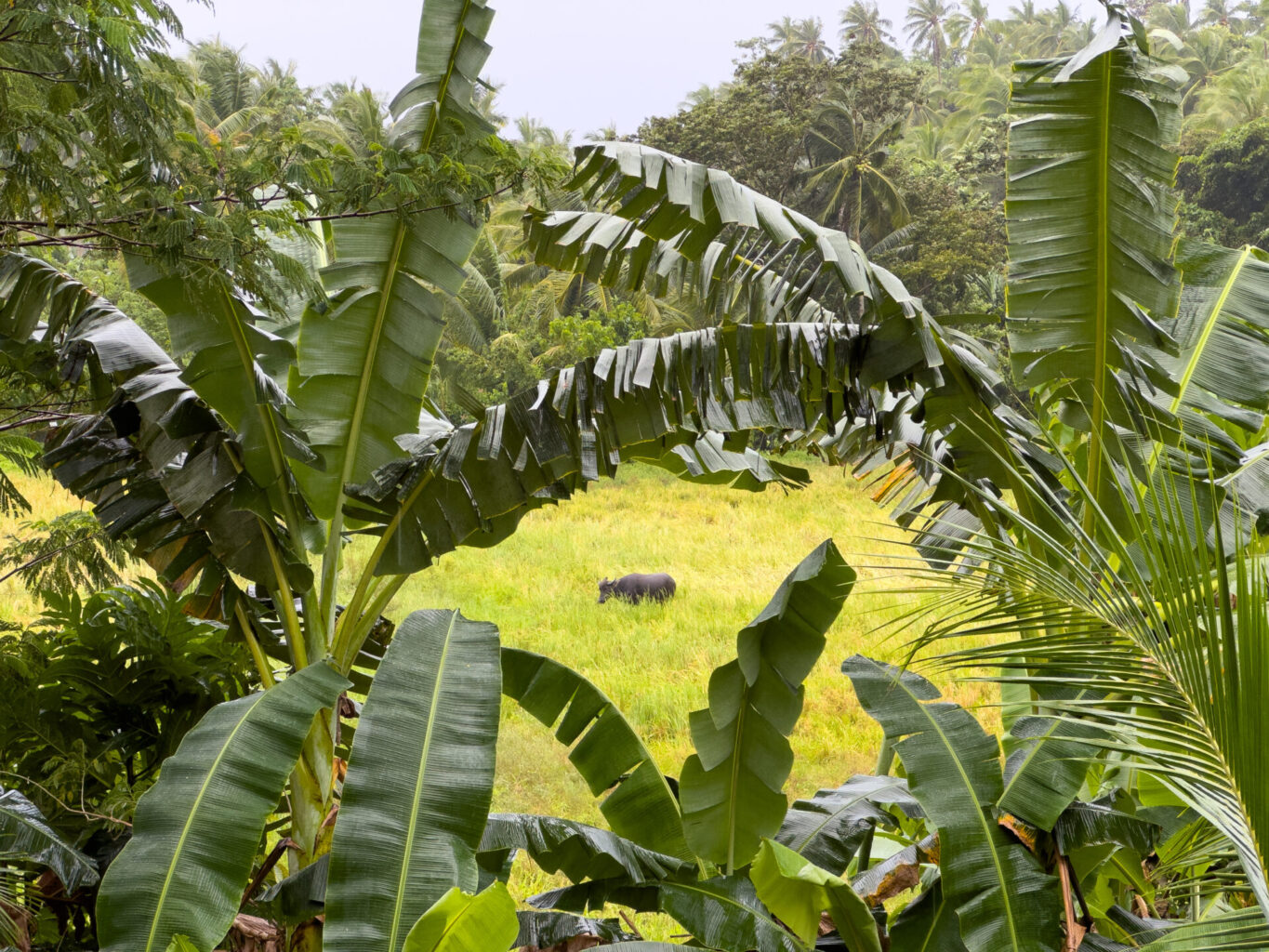
As we left Dapa, heading north toward Burgos, the beauty of Siargao started to unfold. Coconut trees stretched endlessly, as far as the eye could see, their towering figures casting shadows over lush rice fields where carabaos lounged in the midday sun. The air was filled with that laid-back, unhurried rhythm unique to island life, with locals going about their day and every barangay along the way inviting us to slow down, to just be.
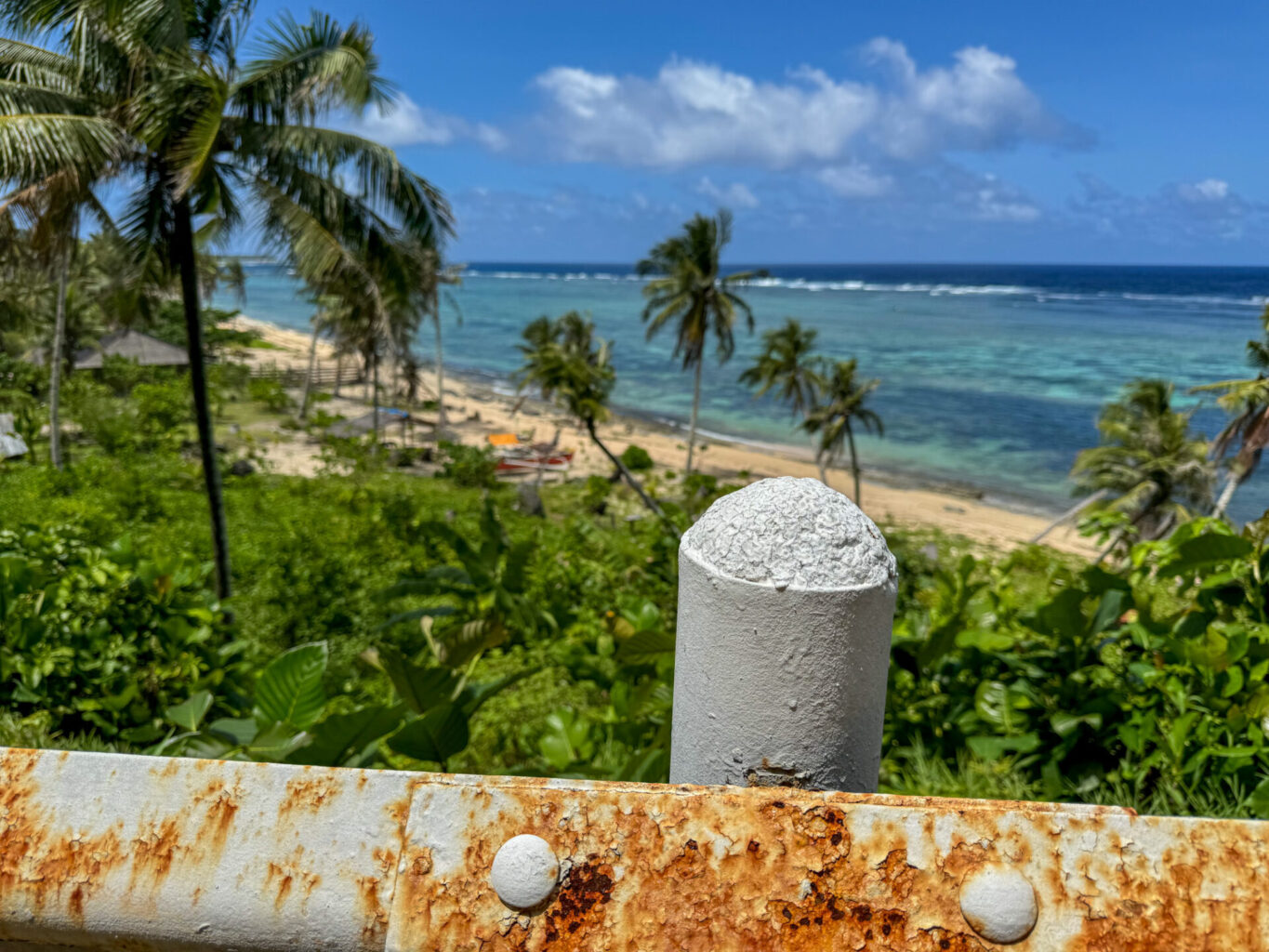
Pacifico Beach: A Surfer’s Paradise
The roads were freshly paved, refreshingly smooth for a remote tropical island getaway, and made for a relaxing drive. On our way to Burgos, we made a stop in Pacifico Beach, one of the island’s prime surfing destinations. Coming around a bend in the mountain road, we found ourselves overlooking a vista so breathtaking, it felt otherworldly: white sand beaches hugged by crystal-clear azure waters, waves rolling and crashing over the reef like a slow-motion film. It was a slice of paradise framed by rows of coconut trees, with a quaint beach bar tucked into the scene, perfectly matching the island’s chill vibe.
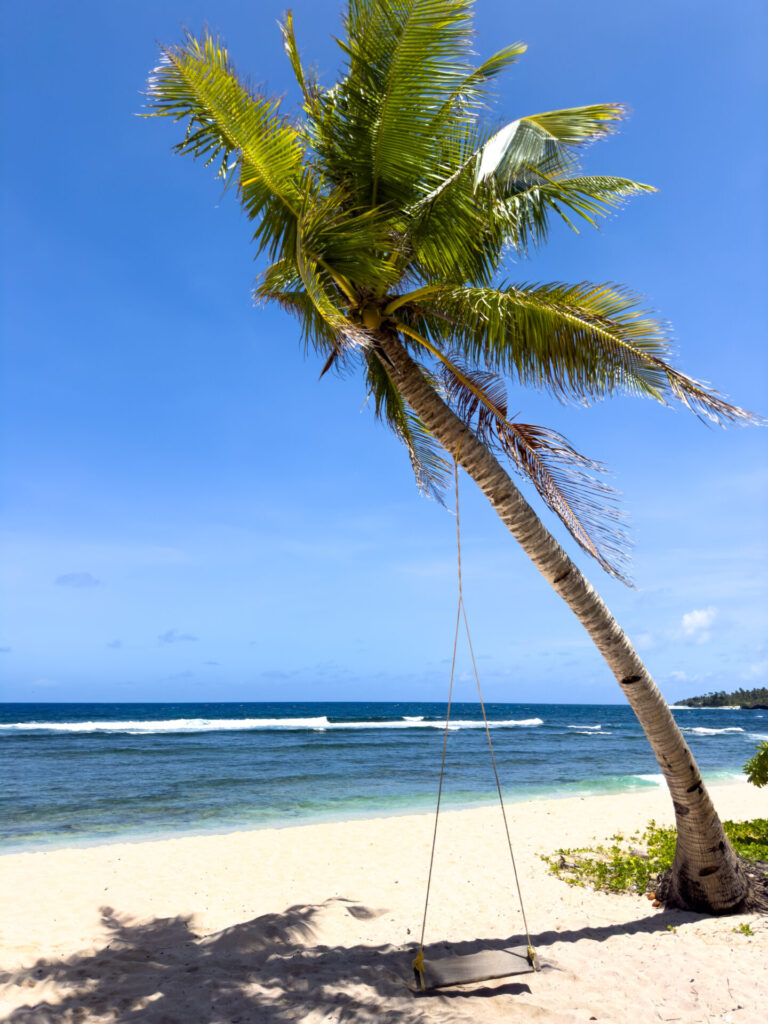
As we strolled along the shore, the beach came alive with groups of surfers and sun-soaked travelers, mainly Western tourists, catching the last few rays of the afternoon. The scene had the easygoing allure of a Corona beer commercial, a vision of island life as far removed from the bustling energy of Manila or Cebu as one could imagine. Pacifico was steadily growing in popularity, Auntie Marilyn’s driver mentioned, with its soft sandy seafloor that’s easier on surfers — yet it still felt uncrowded, almost secretive.
A Glimpse into Siargao’s Untouched North
As we continued north and entered the municipality of Burgos, it was clear we’d reached a different side of Siargao. Burgos felt untouched, as if preserved from the growing buzz around the island’s southern destinations. Pristine and authentic, it offered a side of Siargao that only a handful of tourists get to see. Here, nature and local life moved together graciously, unbothered by the rhythms of the hustle and bustle of the busy southern portion of the island.
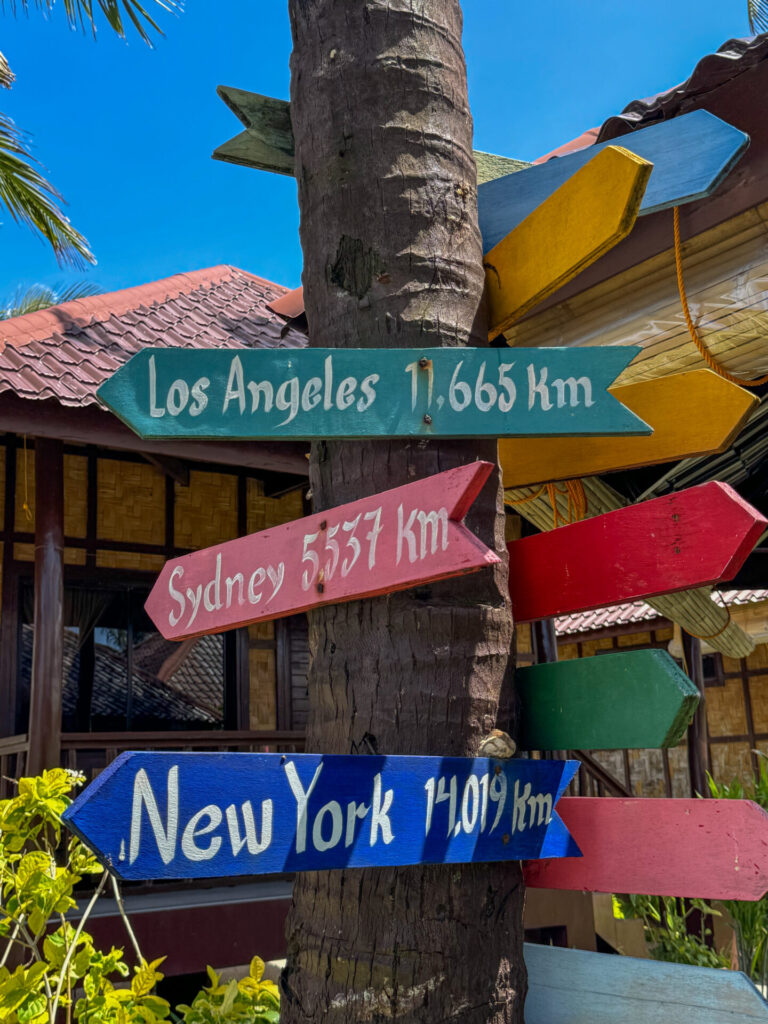
We stopped for lunch at Da Rosa Del Mar Resort, a cozy, quiet retreat in Alegria with cabañas situated adjacent to the beach and a small restaurant that blends into the natural surroundings. The place has a relaxed, rustic charm, perfect for soaking in the slow pace of island life.
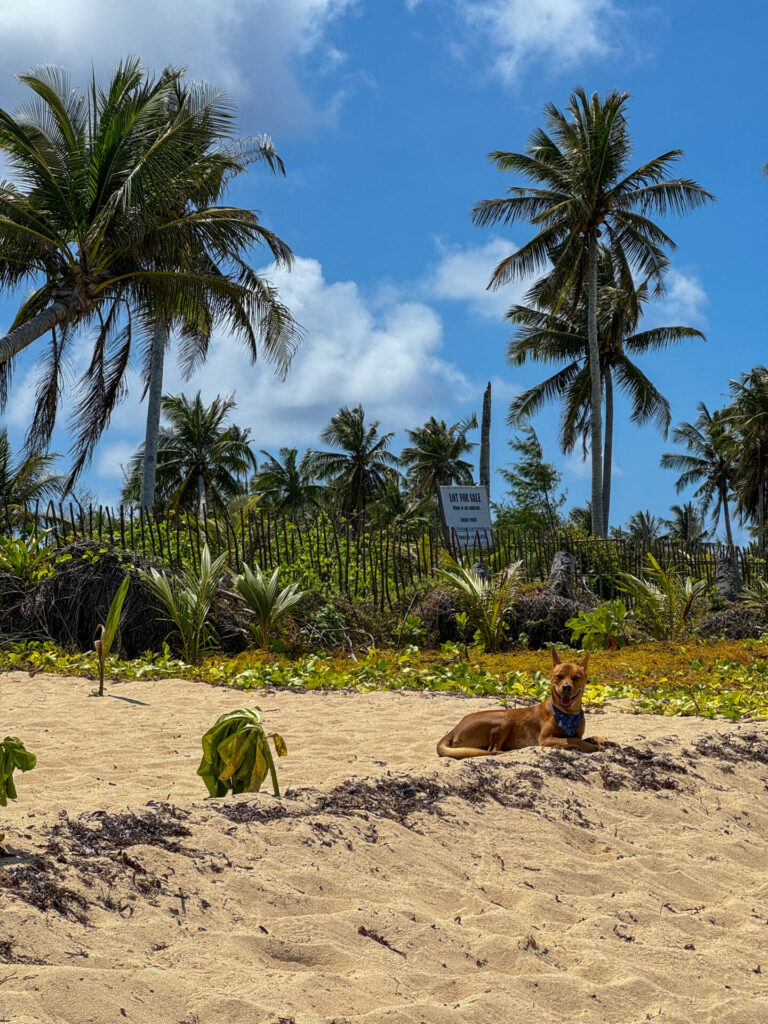
One of the first things that caught my attention was Siargao’s unique dog culture. Here, the local dogs are almost like unofficial ambassadors of the island, roaming freely and welcomed everywhere by locals and visitors alike. They trot through beach resorts and restaurants, content and well-fed, embodying the laid-back vibe of the island.
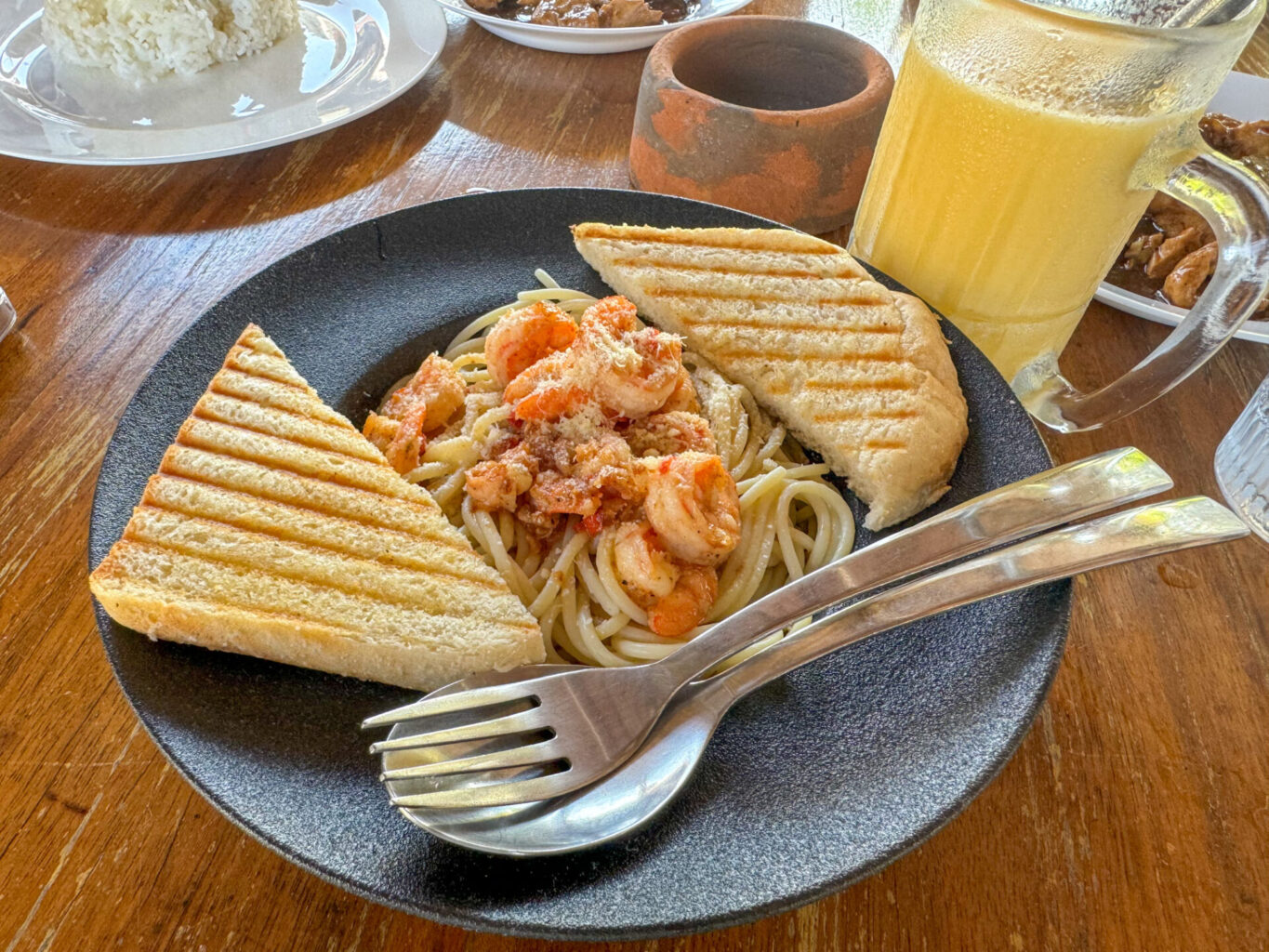
Lunch was simple but memorable. I ordered a plate of aglio e olio shrimp pasta that was hearty and filling. Love went for a Filipino classic: pork adobo, rich and tangy with that balance of soy sauce, vinegar, and garlic that makes the dish a favorite in the Philippines. Da Rosa Del Mar had its own kind of understated charm, the sort of place that invites you to linger, maybe even stay a while.
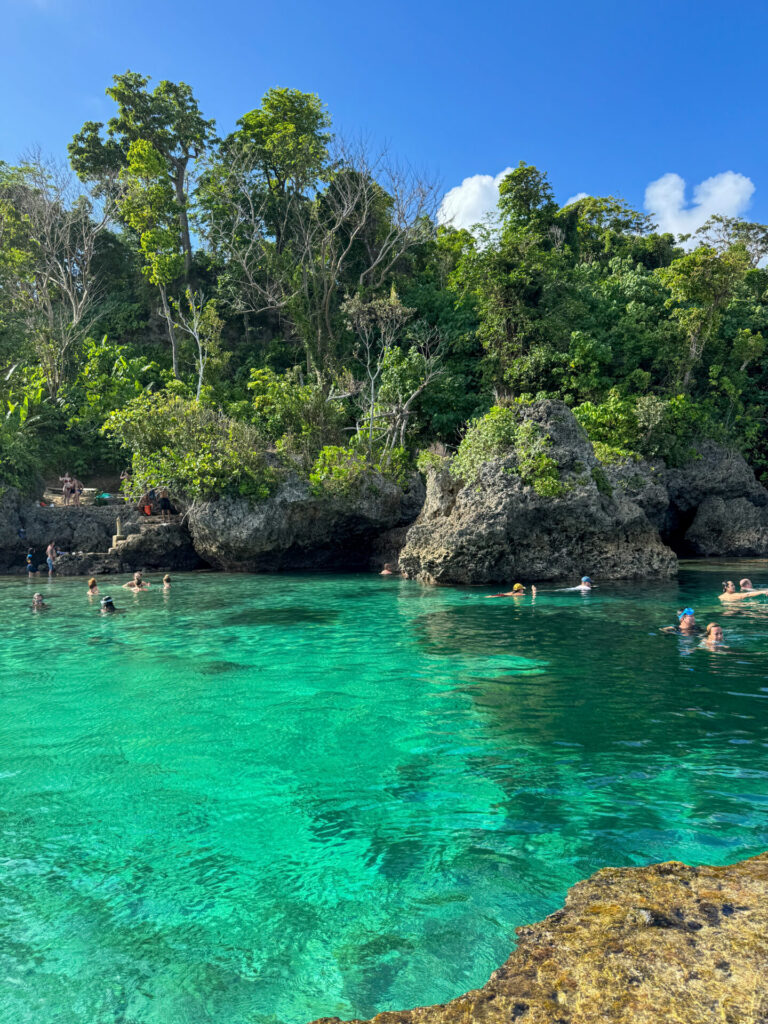
Visiting the Amazing Magpupungko Rock Pools
After exploring Burgos, we turned south toward one of Siargao’s best destinations: the Magpupungko Rock Pools. These natural rock pools, hidden beneath the ocean’s surface, only reveal themselves at low tide, turning a stretch of coast into an otherworldly swimming oasis. For just 50 pesos, you step onto a white sand beach dotted with food stalls and enter a spot that feels like a natural playground crafted for local islanders and curious travelers alike.
Walking toward the pools, the turquoise water came alive with darting fish, crabs scuttling over rocks, and a kaleidoscope of marine life floating through the shallow depths. It wasn’t crowded, just enough visitors to feel alive but still peaceful. Immediately, I knew this place was something special; there was a kind of untouched quality that felt rare and quietly exhilarating.
The rocks here are rugged and slippery, unforgiving to anyone who approaches without caution. I had come in flip-flops—definitely not the best choice. Water shoes would’ve been smarter for navigating the rough, jagged terrain, especially for those keen on leaping from the larger rocks into the clear pools below. But even in flip-flops, there was a thrill in scrambling over the rocks and plunging into the pool, the cool water a relief from the tropical heat.
A Sea of Green at the Coconut Trees View Deck
Our next stop took us to the famed Coconut Trees View Deck, a short drive from the General Luna and Dapa junction along the Siargao Circumferential Road. As we approached, the landscape began to unfold in layers of vibrant green—a sprawling valley blanketed in endless rows of coconut trees, stretching to the horizon and punctuated by distant mountains. It was the kind of view that took your breath away, a reminder of just how vast and untouched parts of Siargao remain.
Standing there, it felt like gazing into an ocean of green, each palm swaying with the gentle breeze, an unbroken canopy that stretches on for what seemed like miles. The scene was as serene as it was majestic, like stepping into a postcard but with a depth and scale that only nature could create.
This spot is a well-loved photo destination, and it’s easy to see why. Locals known as “human drones” are stationed here, ready to snap photos or take their signature videos—zooming out from you to capture the full expanse of the valley. For a small donation, you’ll get a fun personal memento that captures not just the scenery but the feeling of standing amidst it all, surrounded by that boundless sea of green.
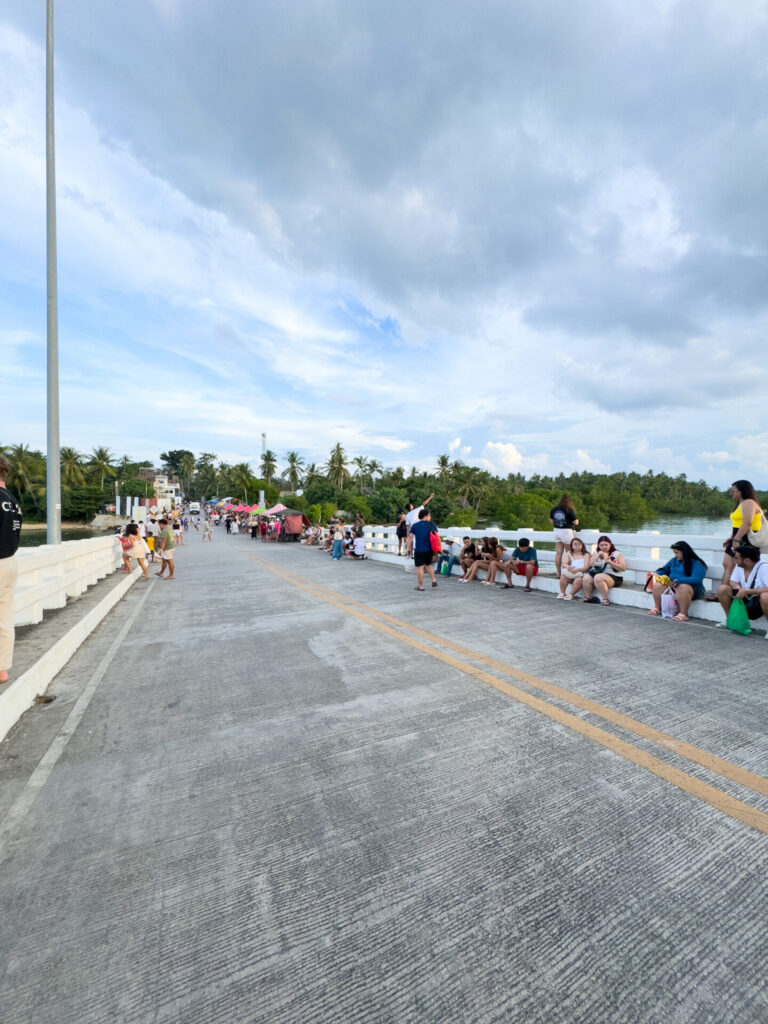
General Luna, Siargao’s Main Tourist Hub
Our final destination for the day was General Luna, Siargao’s vibrant tourist hub and a magnet for visitors from all over. We checked into our Airbnb accommodation, the cozy Road Garden Villa, run by one of Love’s friends. It’s affordable, equipped with air conditioning, and has a communal kitchen—a perfect setup for travelers looking to cook up a quick meal between activities. Road Garden Villa is also centrally located, right along General Luna’s bustling Tourism Road, very convenient for anyone wanting to be in the thick of things.
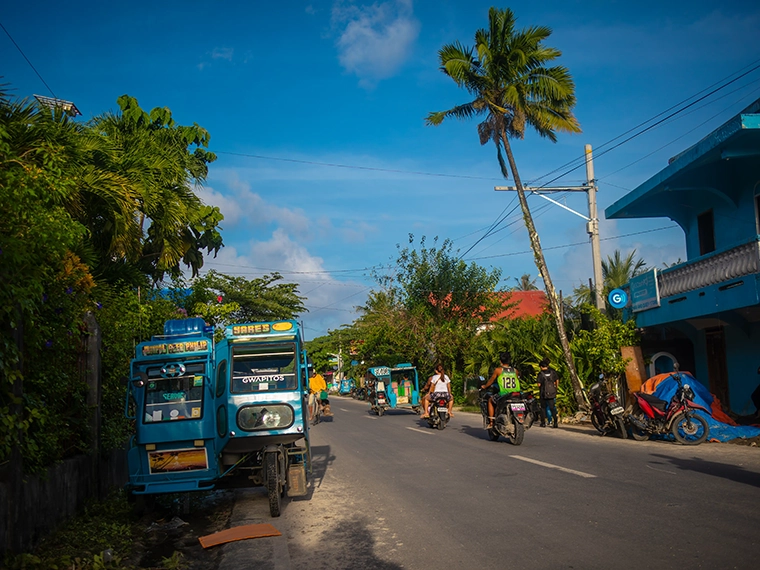
General Luna, or “GL” as locals and travelers alike call it, has a youthful energy. Most of the island’s best restaurants, hotels, and nightlife spots are clustered here, drawing crowds of surfers, backpackers, and travelers. The scene is a bit chaotic, with foreigners zipping around on rented motorbikes, their surfboards strapped to the sides as they weave through the lively streets.
Tourism Road, just outside our accommodation, is packed with nearly every cuisine imaginable. Filipino, Italian, Spanish, Japanese, and even Mexican food—all easily accessible within a short walk. It’s the kind of place where you can sample dishes from around the world, all while taking in the relaxed island vibes. This road was clearly designed with tourists in mind, offering a bit of everything for everyone.

Lunch at Lamari: A Jungle Paradise for Foodies
The next day, we found ourselves at Lamari, a hidden gem tucked within the lush Siargao jungle. Entering Lamari felt like stepping into a paradise within paradise—a serene, modern retreat surrounded by rich vegetation. The boutique hotel and restaurant boasts some of the most sophisticated architecture on the island, complete with a pool on site that sparkles under the jungle canopy, setting a tranquil scene that’s both elevated and inviting.
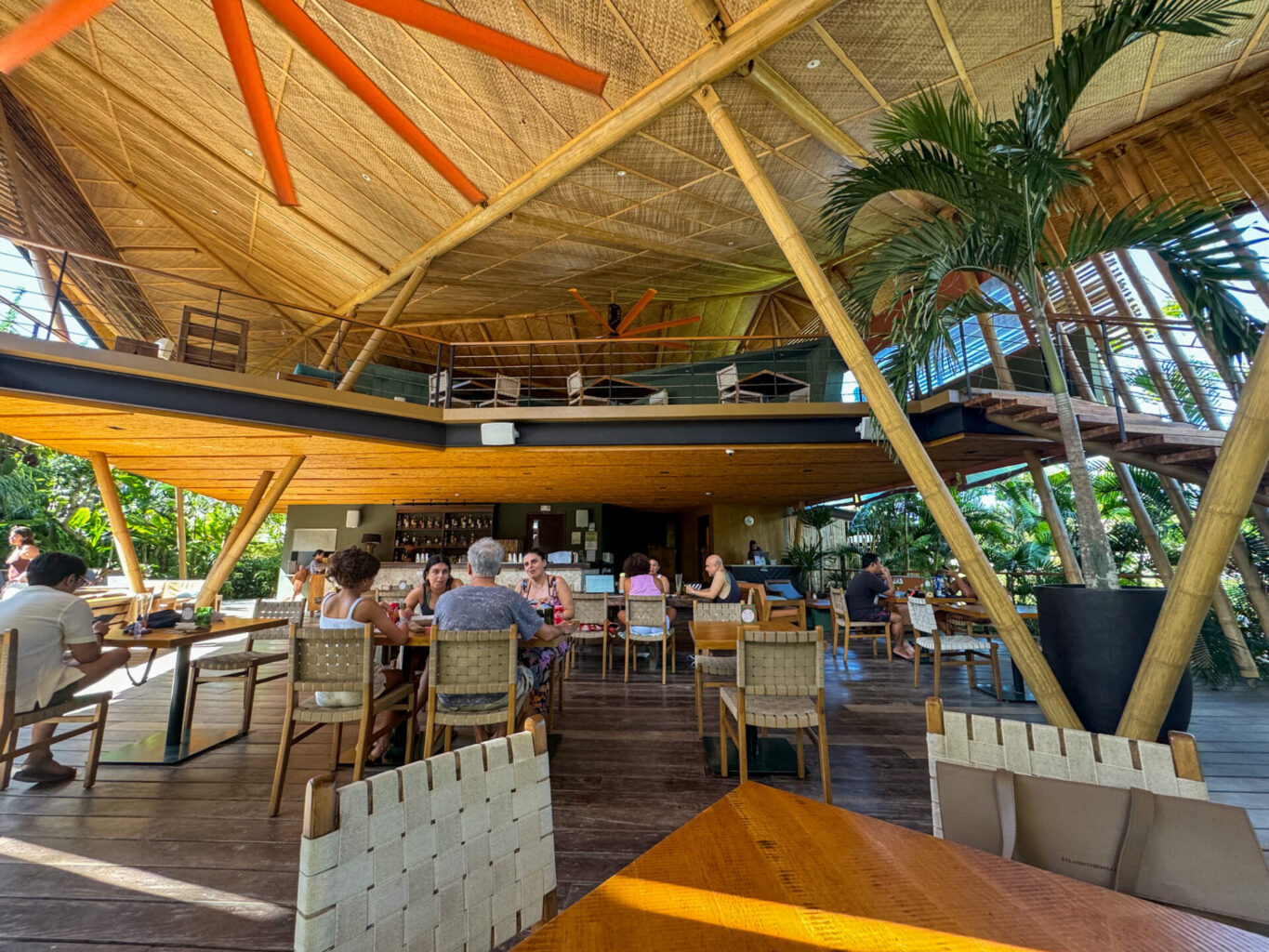
Lamari’s menu offers a mix of local and international dishes, and their cocktail selection is equally impressive. We started with two Pasiflora Mojitos, passionfruit mojitos with a perfect blend of tangy and sweet that instantly refreshed us from the midday heat. Lamari’s happy hour, we learned, is a decent draw for both residents of the island and tourists who come for good drinks and an even better vibe.
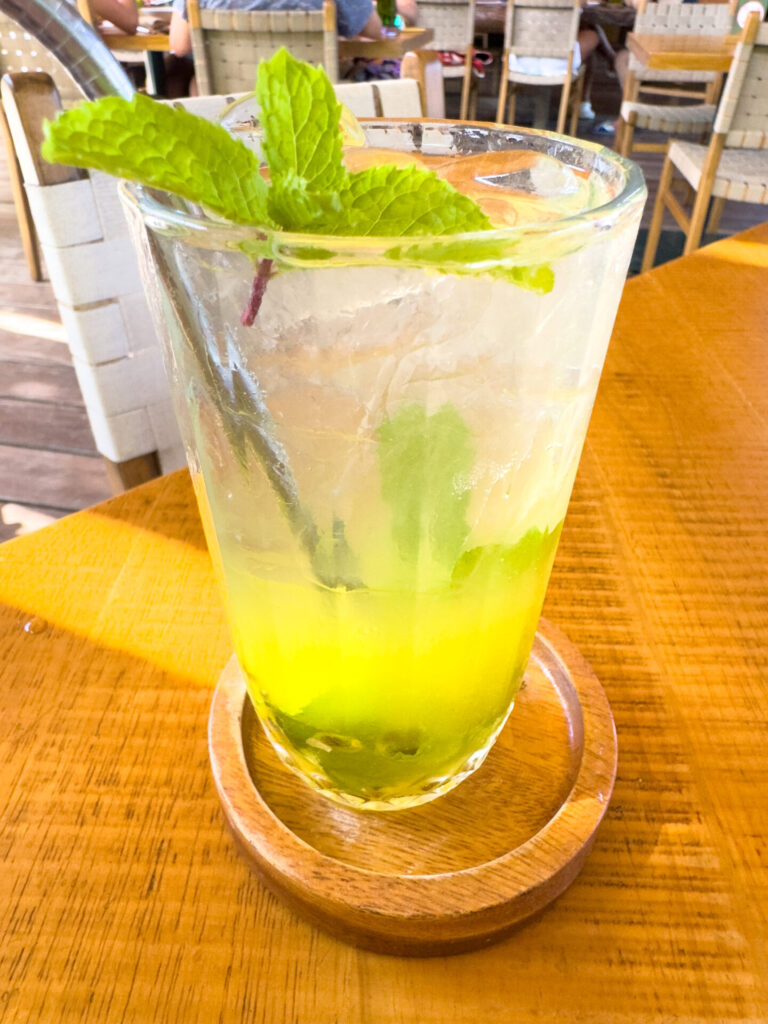
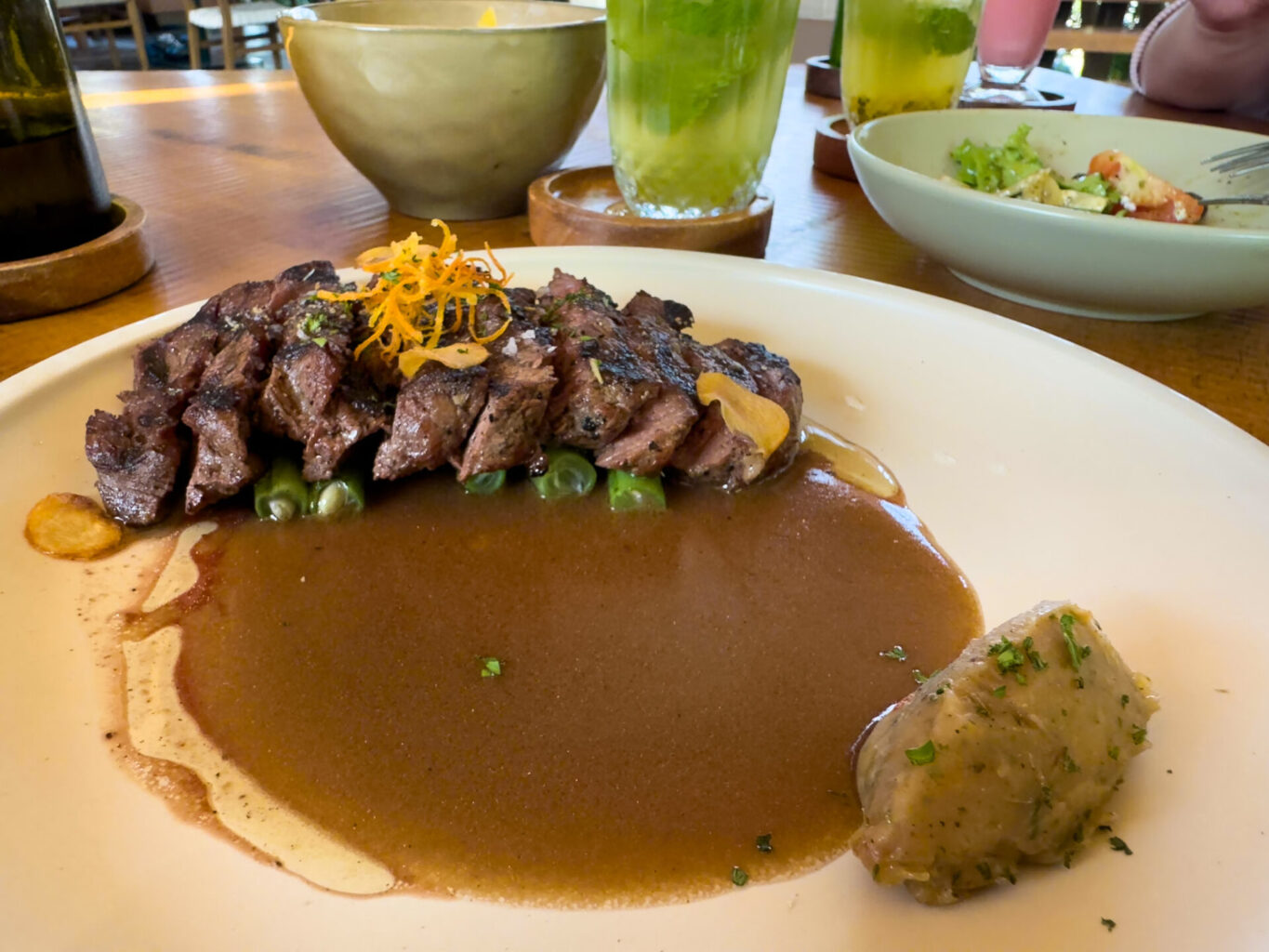
For the main course, I went with their steak special—a choice I won’t soon forget. The steak arrived just as I’d ordered it, medium-well-done, accompanied by crispy French fries and a side of rich gravy. It turned out to be one of the best steaks I’d had in the Philippines, rivaling the quality of a similar meal I once enjoyed at Chingolo Deli in Manila. Love opted for the Beef Salpicao, a Filipino-Spanish dish featuring US beef coated in a savory mix of Worcestershire sauce, butter, garlic, and chili flakes, served with a generous portion of rice. We added a side of Greek salad, its fresh olive oil, feta cheese, and oregano offering a bright contrast to the richness of our mains.
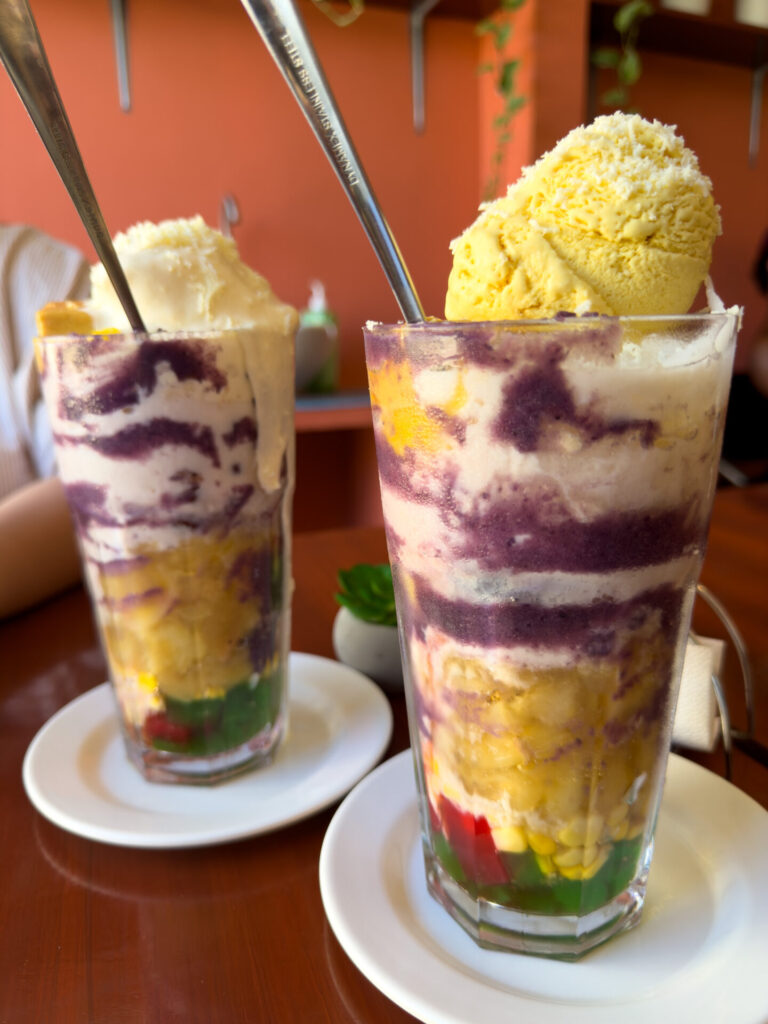
Jorene’s Homemade Ice Cream’s Halo-Halo Special
Our next stop was Jorene’s Homemade Ice Cream, a must-visit according to one of Love’s local friends who insisted we try their Special Halo-Halo—a layered Filipino dessert famous for its colorful ingredients and refreshingly sweet, icy texture. We each ordered a Halo-Halo, both topped with a generous scoop of salted caramel ice cream. From the first bite, it was clear that Jorene’s is offering something special.
For those who haven’t tried it, Halo-Halo is an adventure; you start by tasting the ice cream on top before mixing everything together. At Jorene’s, each scoop is filled with surprises: from creamy leche flan to grated cheese, bits of young coconut, slices of local banana, and the iconic ube halaya (purple yam jam). Every spoonful reveals a new flavor and texture, creating a medley that somehow works beautifully together.
This Halo-Halo is amazingly good and also impressively generous in size—a steal at just 150 pesos. While Kuya J’s, a popular Filipino restaurant chain, offers the most similar Halo-Halo (in my opinion), Jorene’s has an artisanal touch that makes it feel truly authentic. This is the kind of hidden gem you stumble upon in General Luna and wish you could find anywhere else.
(If you want more details about Jorene’s, Love dedicated a full blog post to it!)
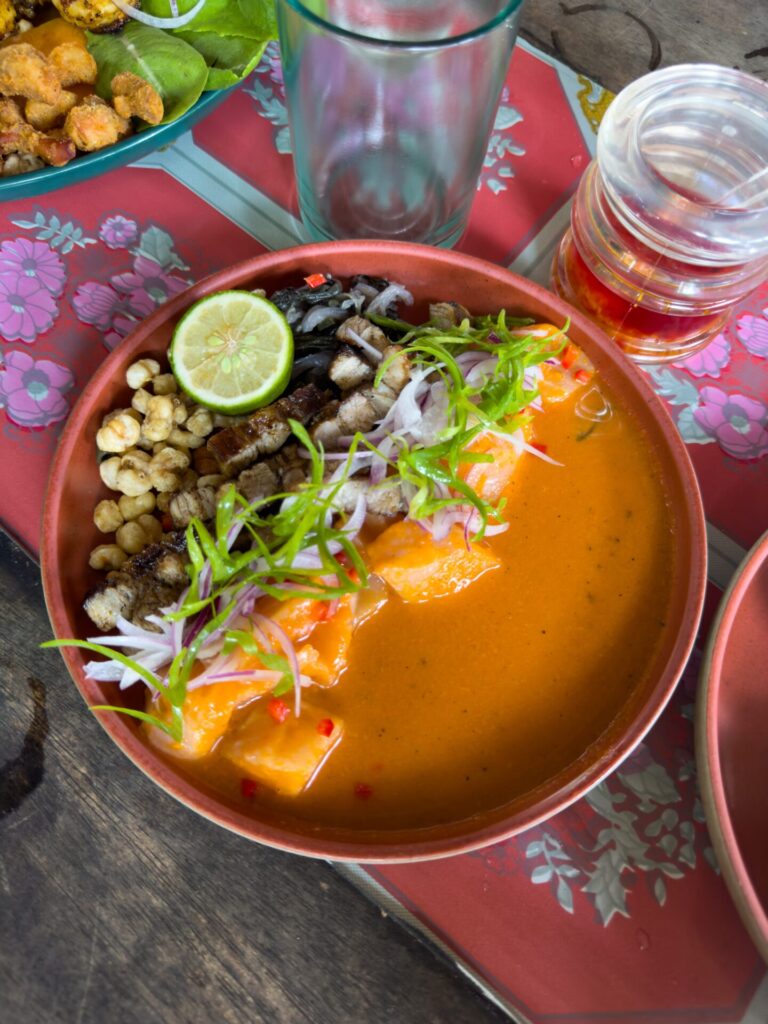
Cev: Where Ceviche Meets Kinilaw
On our food trip through Siargao, Cev: Ceviche & Kinilaw Shack easily secured its spot as one of my top three places to eat on the island. This intimate shack offers a minimalist menu with seafood options served alongside tortilla chips or rice. Due to its popularity, Cev fills up quickly, so reservations are highly recommended—a lesson we learned the hard way.
Chef David Del Rosario brings a unique blend of Peruvian-style ceviche and Filipino kinilaw, celebrating fresh, local ingredients in every dish. I ordered the Guyam, which offers a spin on Filipino sinuglaw-basically kinilaw with the addition of grilled liempo (pork belly). The Guyam is a vibrant mix of tuna, coconut vinegar, grilled pork belly, roasted red pepper puree, pickled vegetables, and fried corn. The combo of red pepper puree and coconut vinegar added an interesting twist that makes each bite unique.
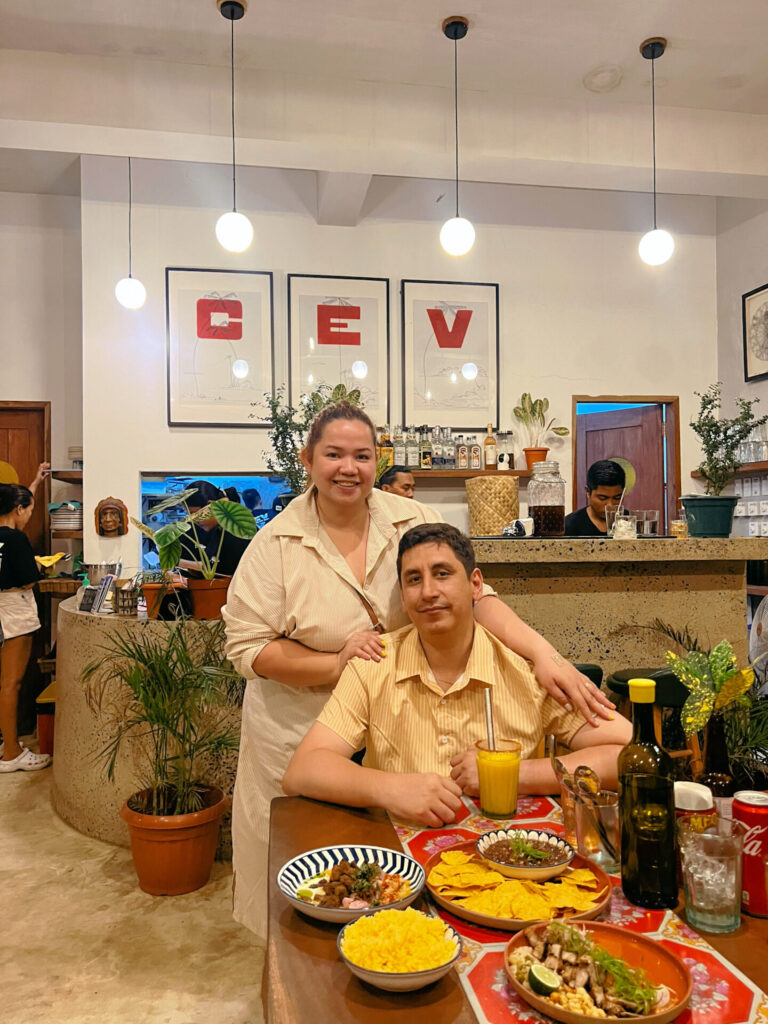
Love opted for the Santa Monica, a creative combination featuring fried octopus, calamansi, coconut milk, pumpkin mash, toasted peanuts, and rice. While she appreciated the fresh ingredients, her reaction reflected her love for the traditional Filipino kinilaw. For her, Cev misses the mark on the classic kinilaw experience—she found the portion small, the flavors somewhat unfamiliar, and the rice a touch oily.
This made me think of my own experience with tacos in fine dining: while innovative takes can be delicious, sometimes they stray too far from the familiar flavors and experiences that make the dish so special. At Cev, though, I could appreciate the unique approach. This spot is a must-visit for those looking to experience a creative culinary twist, though it may surprise purists with its novel interpretations.

Island Hopping
An island hopping tour in General Luna is practically a must-do, offering a six-hour tour across three stunning islands for about 1,500 pesos per person. Our tour boat departed around 10 a.m. from General Luna’s port, conveniently close to the Bureau of Immigration for anyone considering a visa extension. With a tour guide, crew, and a group of about 15–20 tourists, we embarked into the azure sea, where the water’s vibrant blue hues set the perfect backdrop for a day of adventure.
Naked Island
Naked Island was our first stop—a large sandbar/island with no trees or shade, fittingly named. Despite its minimalist landscape, Naked Island is ideal for a quick swim and possibly for drone photography, as the wide-open sandbar and surrounding water create stunning visuals. If you’re headed here, be sure to pack sun protection, including a hat, sunglasses, and plenty of sunscreen.
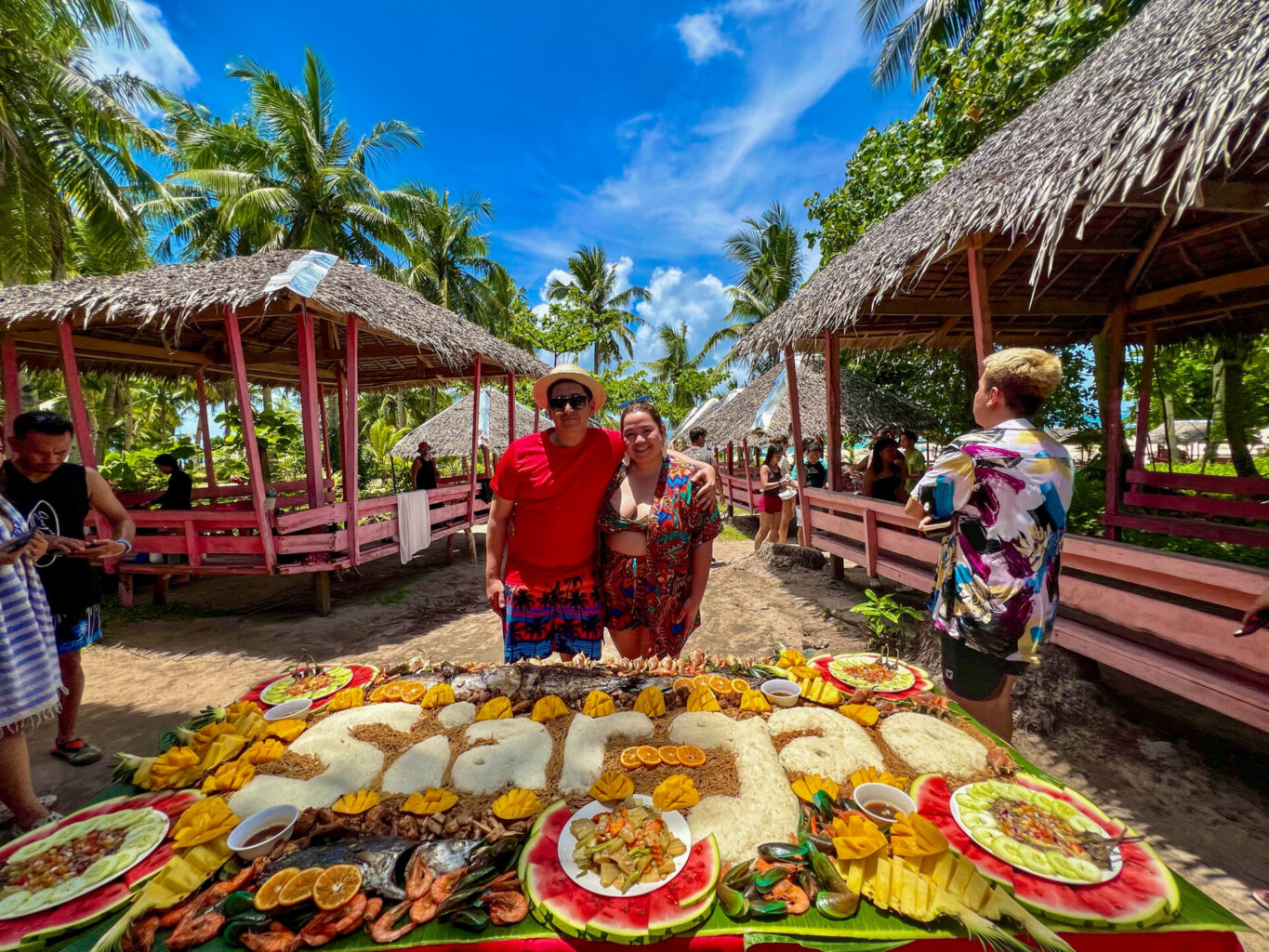
Daku Island
Next up was Daku Island, the largest of the three islands and a welcome contrast, offering shade, huts, and plenty of greenery. Here, we enjoyed a Boodle Fight lunch—my first real experience with this communal feast. It featured an abundance of freshly grilled fish, shrimp, mussels, conch, fresh fruit, pancit, and chop suey, all laid out on banana leaves for everyone to share. Love had a funny moment while savoring some conch shell meat, as a curious foreigner saw her and remarked, “That’s edible?”. All in all, It was a fun, communal way to enjoy some Filipino flavors by the beach.
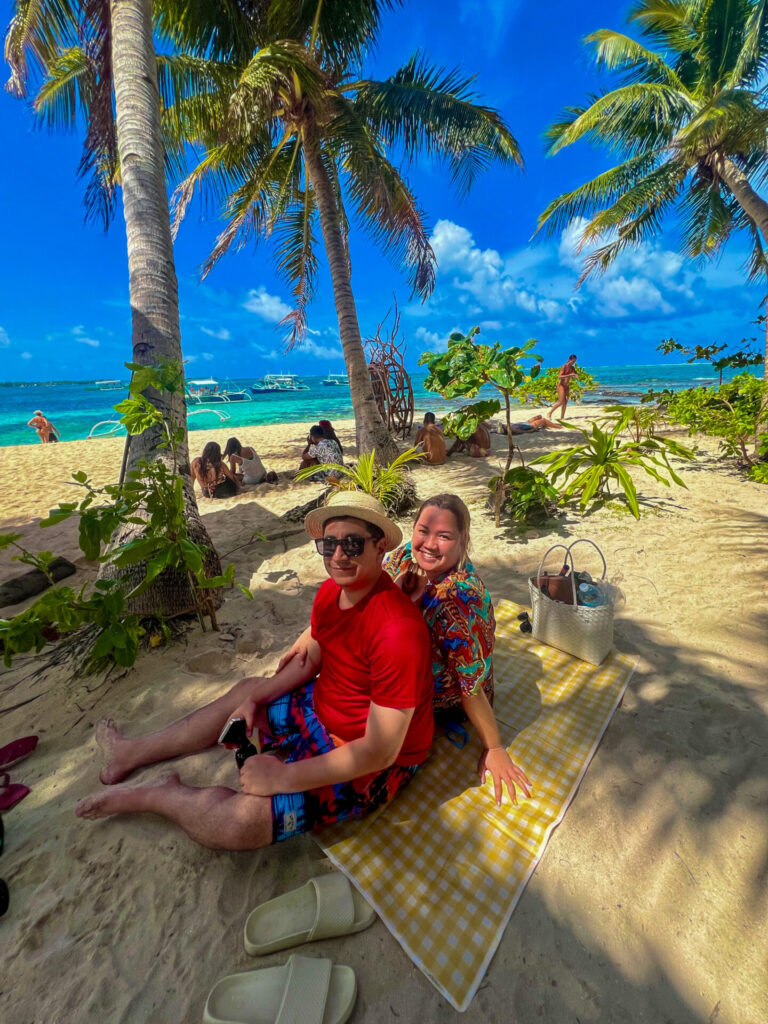
Guyam Island
Finally, we reached Guyam Island, my personal favorite. This tiny, idyllic island features a beach sand basketball court—a quirky and uniquely Filipino touch, as I watched players somehow make it work. Guyam also had refreshments on hand for sale, from soft drinks to cold beers. There’s even a drone photographer on the island who, for 500 pesos, captures cool aerial shots and videos. We laid out a beach blanket, soaking up the peaceful vibes beneath the trees and taking in the last of the day’s views. It was the perfect way to wrap up a memorable Siargao island hopping tour.
Cloud 9: The Heart of Siargao’s Surfing Scene
No trip to Siargao would be complete without a visit to Cloud 9, the Philippines’ most iconic surfing destination. With its well-known boardwalk stretching out to the waves, Cloud 9 is a must-see, famous not only among local surfers but worldwide. We visited at sunset, the perfect time to watch surfers catching waves under the golden sky—a sight that captures the vibrant surf culture unique to Siargao.
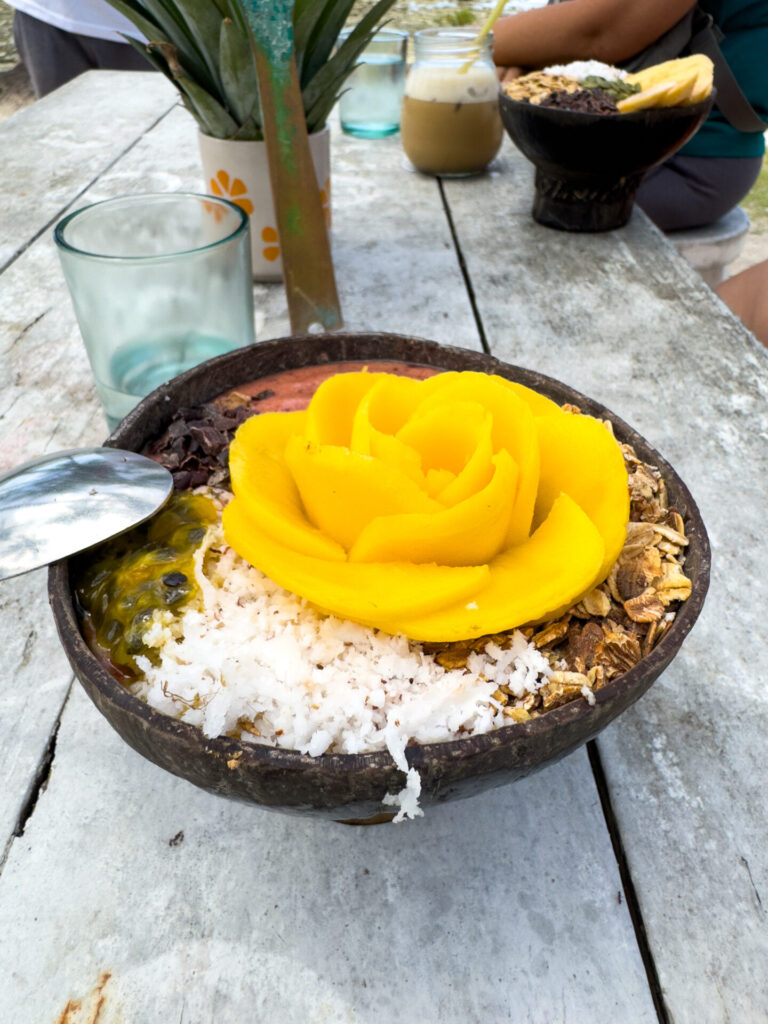
Across from the beach sits Shaka Cafe, the ideal spot for a post-surf treat. Known for its healthy fruit bowls and smoothies, it’s where I ordered their Bom Dia açaí bowl, which refreshingly took me back to my time in Rio de Janeiro, where I first discovered açaí when I studied abroad there. This bowl, priced at 330 pesos, is packed with fruit, including açaí, bananas, grated coconut, mango, berries, and passionfruit. The tropical flavors are vibrant, nourishing, and energizing, just like I remembered.
Love opted for the Peanut Butter and Salted Caramel Bowl which I got to sample. Packed with peanut butter, caramel, granola, banana, cacao nibs, and a hint of sea salt, it was filling, nutty, and perfect for an energy boost after a long day of surfing. Both bowls offered a satisfying balance between healthiness and indulgence, matching Cloud 9’s vibe of laid-back energy.
Kermit Surf Resort and Restaurant
Next we headed to Kermit Surf Resort and Restaurant Siargao, reputed by many as the best restaurant on the island. Kermit’s specialty is their woodfire pizza, authentically baked in an oven brought in directly from Italy by its Italian owner. Getting to Kermit is part of the adventure itself, with a dirt road marked by potholes that leads up to the restaurant. The vibe inside is pure island, with beach sand covering the restaurant floor and a laid-back, welcoming atmosphere. As they say, sometimes ugly roads lead to beautiful destinations, and this was a prime example.
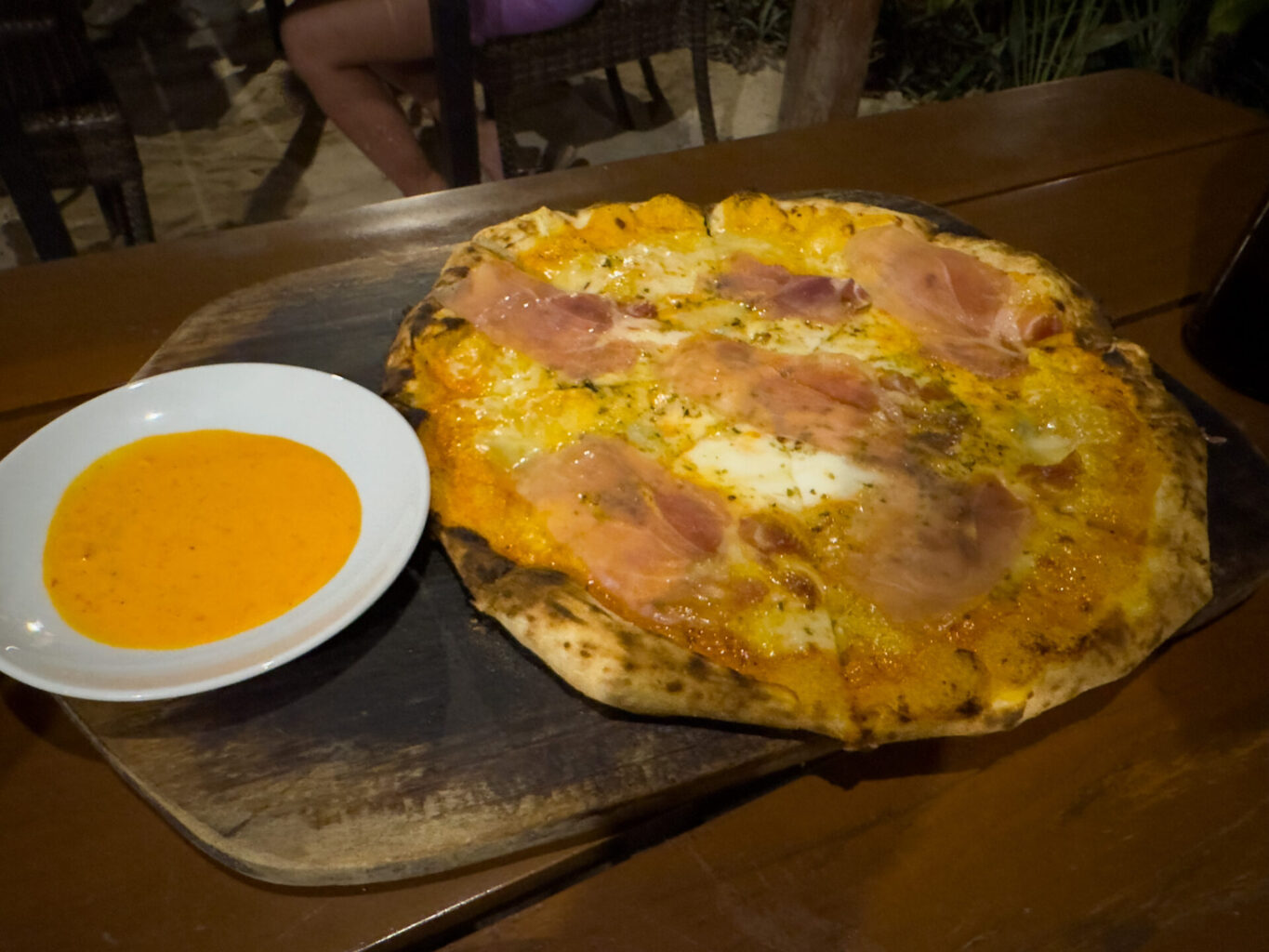
While Kermit offers a range of Italian and international dishes, we knew we had to try the signature Kermit Pizza, topped with provolone, gorgonzola, parmesan, and prosciutto, with their signature spicy orange hot sauce on the side. Each bite made me think, so this is what Italian pizza should taste like. I’ve never been to Italy, so until now, New York-style pizza may have been my closest comparison. But this? This was an entirely different experience.
We sat next to an Italian couple, who curiously asked if our pizza was “Parma.” At first, Love and I were confused, then I realized they were asking about the prosciutto parma topping on our Kermit Pizza that we were eating. Pointing it out on the menu, we ended up sharing a friendly moment with them. To my surprise, despite their lean frames, each of them happily chowed down on a whole pizza with ease, proving that Kermit’s pizza is simply too good to share.
Conclusion
As mentioned, while this was my first time in Siargao, Love had already been familiar with the island during her previous trips. But after just a single day, I knew I was in the grip of what locals call the “Siargao curse”—the island’s irresistible pull that makes you never want to leave. We’d been searching for a place to settle in once our condo lease in Manila ended, and the idea of staying in the bustling city had become less and less appealing to me. Moving from Los Angeles to Manila had felt like a lateral shift from one massive city to another. Life in Manila was convenient as a travel hub, but offered little to explore beyond the malls and restaurants, I often felt cooped up in our condo, craving fresh air and open spaces.
Then, during our tour of Northern Siargao, Auntie Marilyn casually showed us a vacant rental she had—a cozy house next to a running creek, surrounded by lush jungle and plenty of sunlight filtering through banana and coconut trees. The peaceful setting, complete with the sound of a running creek and the vivid greens of the island, left a lasting impression. Though it took us a while to make a decision, I couldn’t shake the feeling that passing on living in Siargao might be something I’d regret.
So, three months later, we packed all of our belongings, bid farewell to Manila, and embraced island life in Siargao. Since then, we’ve never looked back. Living here, surrounded by beauty, adventure, and a warm community, has been an experience beyond anything we could have expected. The “Siargao curse” is real—and in the best possible way.
Stay tuned for more posts about our life here in Siargao!